Service Navigation
Search
To measure the ozone concentrations in the high atmosphere, MeteoSwiss uses different methods which cover different spatial and temporal scales. Spectrophotometers installed in Arosa until 2021 and in Davos measure the transparency of the atmosphere for ultraviolet solar radiation at different wavelengths. The total ozone amount in the air column above the station is calculated on the basis of these readings. Moreover, during sunrise and sunset these same spectrometers are also measuring profiles of ozone. In Payerne, the ozone profile is recorded directly (in situ) using balloon-borne ozone sondes. Moreover, a microwave radiometer is continuously measuring the stratospheric and mesospheric ozone concentration between 20 and 70 kilometres altitude over Payerne.
Measurement of ozone column
The spectrophotometers are based on the measurements of the absorption of the solar radiation in the UV light range (300-330 nm) which allow the total ozone quantity contained in the atmospheric column above the station to be calculated. Two types of instrument are used here, the Dobson and the Brewer.
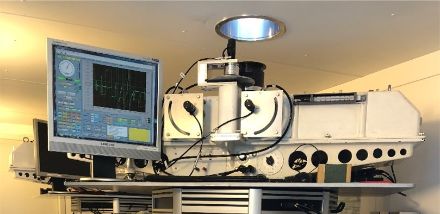

Dobson spectrophotometer and time series of ozone column observations by this type of instrument in Arosa/Davos since 1926.
The Dobson spectrophotometer measures the differential intensity of wavelength pairs of the solar radiation, with one being weakly absorbed and the other being strongly absorbed as they cross through the atmosphere. This allows the total ozone column to be derived. In order to mask disruptive effects, three different wavelength pairs are measured and combined. For the device depicted in the figure, a computer controls the sequence of operations necessary for measuring the ozone column. The very-long series of ozone measurements taken in Arosa/Davos measured since 1926 is based on this type of instrument.
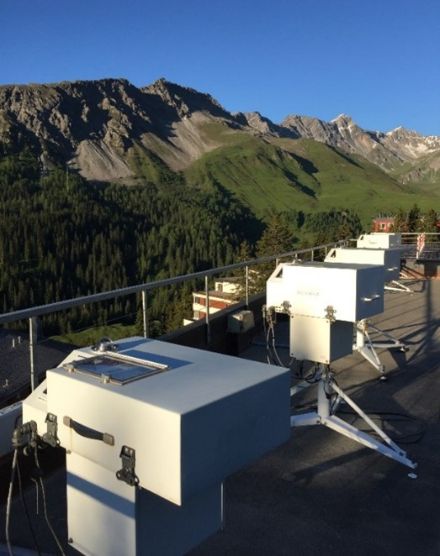
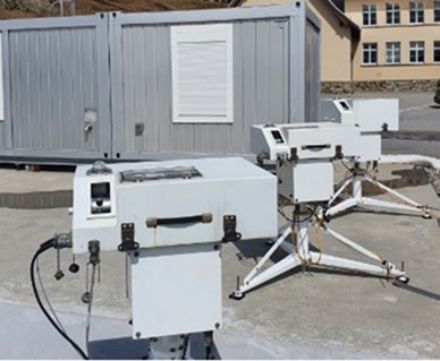
The Brewer spectrophotometer measures the absolute intensity of the solar radiation for four wavelengths in the range from 310 to 320 nm. The ozone column can be determined on the basis of the weighted sum of these measurements. This device works automatically and is very reliable; it has been used in Arosa and Davos since 1988.
Measurement of the ozone profile by ozone sondes
A balloon-born ozone sonde is launched three times a week from Payerne. Measurements have been taken continuously since 1966. The ECC ozone sonde is an electrochemical cell, in which ozone concentration is measured based on a red-ox reaction involving ozone in a neutral, buffered potassium iodide sensing solution. Coupled with a radiosonde during a weather balloon flight, the ECC ozone sonde provides vertical ozone profiles up to an altitude of 30-35 km with a resolution of 150 m and a precision of 3-5%.
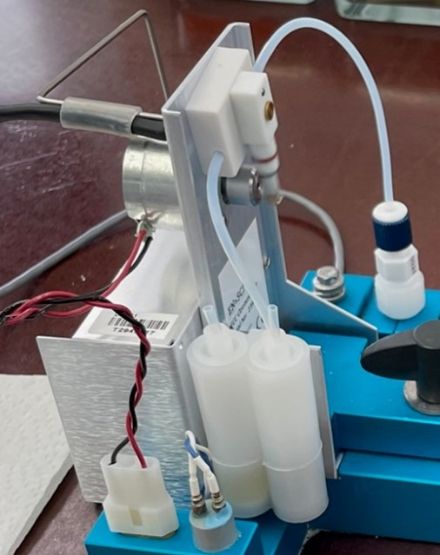

Measurements of ozone profiles by spectrophotometry
In addition to the total ozone column, the Dobson and Brewer spectrophotomers measure two ozone profiles per day. At sunrise and sunset, the angle of the sun in relation to the horizon gradually changes. This means that the path of light through the atmosphere becomes longer and longer, and light is increasingly absorbed. An ozone profile can be deduced from the measurement of the intensity of two wavelengths in the UV (one strongly absorbed by ozone and the other less) as this angle changes, Ozone profiles are given from the surface up to 50 km at a resolution of 5 to 10 km (Umkehr method). The series of ozone profiles from Arosa/Davos started in 1956 and is the longest Umkehr time series of the world.

Measurements of ozone profiles by microwave radiometry
The microwave radiometer SOMORA (Stratospheric Ozone Monitoring Radiometer) measures ozone profiles by remote sensing. The volume mixing ratio of ozone in the stratosphere and lower mesosphere is observed with a vertical and temporal resolution of 8 to 15 km and 60 minutes, respectively. Developed by the Institute of Applied Physics of the University of Bern, the SOMORA MWR is continuously operated in Payerne since January 2000. MeteoSwiss is submitting the SOMORA data to the Network for the Detection of Atmospheric Composition Change (NDACC).
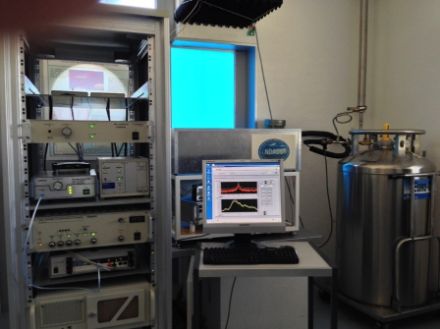

The vertical distribution of ozone in the stratosphere and lower mesosphere is deduced from the measurement of the spectral line of ozone at 142.17 GHz. The line intensity is proportional to the ozone concentration, its width is dependent on the ambient pressure at the location of the emission, i.e. on altitude. The ozone concentration is indicated in the unit of the number of ozone molecules per volume of air. Displayed as a series the 24 daily ozone profile observations clearly demonstrate the altitude-dependent annual cycle of the atmospheric ozone content above Payerne.

Total column ozone
Stübi, R., Schill, H., Klausen, J., Maillard Barras, E., and Haefele, A.: A fully automated Dobson sun spectrophotometer for total column ozone and Umkehr measurements, Atmos. Meas. Tech., 14, 5757–5769, https://doi.org/10.5194/amt-14-5757-2021, 2021.
Zhao, X., Fioletov, V., Redondas, A., Gröbner, J., Egli, L., Zeilinger, F., López-Solano, J., Arroyo, A. B., Kerr, J., Maillard Barras, E., Smit, H., Brohart, M., Sit, R., Ogyu, A., Abboud, I., and Lee, S. C.: The site-specific primary calibration conditions for the Brewer spectrophotometer, Atmos. Meas. Tech., 16, 2273–2295, https://doi.org/10.5194/amt-16-2273-2023, 2023.
Ozone sounding
Stauffer, R. M., Thompson, A. M., Kollonige, D. E., Tarasick, D. W., Van Malderen, R., Smit, H. G. J., et al. (2022). An examination of the recent stability of ozonesonde global network data. Earth and Space Science, 9, e2022EA002459, https://doi.org/10.1029/2022EA002459.
Jeannet, P., R. Stu¨bi, G. Levrat, P. Viatte, and J. Staehelin (2007), Ozone balloon soundings at Payerne (Switzerland): Reevaluation of the time series 1967–2002 and trend analysis, J. Geophys. Res., 112, D11302, doi:10.1029/2005JD006862.
Umkehr
Maillard Barras, E., Haefele, A., Stübi, R., Jouberton, A., Schill, H. Petropavlovskikh, I., Miyagawa, K., Stanek, M., Froidevaux, L., Dynamical linear modeling estimates of long-term ozone trends from homogenized Dobson Umkehr profiles at Arosa/Davos, Switzerland, https://doi.org/10.5194/acp-22-14283-2022, 2022.
SOMORA
Maillard Barras, E., Haefele, A., Nguyen, L., Tummon, F., Ball, W. T., Rozanov, E. V., Rüfenacht, R., Hocke, K., Bernet, L., Kämpfer, N., Nedoluha, G., and Boyd, I.: Study of the dependence of stratospheric ozone long-term trends on local solar time, Atmos. Chem. Phys., https://doi.org/10.5194/acp-20-8453-2020, 2020.
Sauvageat, E., Maillard Barras, E., Hocke, K., Haefele, A., and Murk, A.: Harmonized retrieval of middle atmospheric ozone from two microwave radiometers in Switzerland, Atmos. Meas. Tech., 15, 6395–6417, https://doi.org/10.5194/amt-15-6395-2022, 2022.